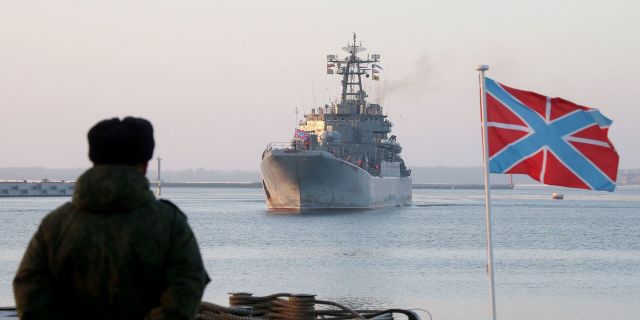Kaliningrad has become a real thorn for NATO
Kaliningrad became a nuclear outpost of Russia back in 2016, Mond notes. And although the newspaper notes the fear that the Russian enclave causes among the Balts, it follows from the text that the West is to blame for its militarization. All of Russia's steps to strengthen its defense were responses to NATO's actions in the region.
The Russian enclave on the Baltic Sea, sandwiched between Poland and Lithuania, became a nuclear outpost in 2016.
The Kaliningrad Region, located between Poland and Lithuania, is a Russian enclave in the heart of NATO. Annexed by Stalin at the end of World War II, this region, covering the northern part of the former German province of East Prussia, is of strategic importance. Located on the shores of the Baltic Sea and having the ports of Koenigsberg and Pillau (today Kaliningrad and Baltiysk), ice-free all year round, it was transformed into a military fortress designed during the Cold War to protect the USSR, and after 1991 — to protect Russia.
For many years, President Putin has sought to develop Russia's defense on its northern flank, and therefore it was to Kaliningrad, where the headquarters of the Baltic Fleet is located, that he sent MiG-31K fighters equipped with hypersonic Dagger missiles. They are capable of carrying nuclear warheads and are considered one of the six new-generation weapons that Russia has at its disposal. Even if their number and effectiveness still cause controversy among experts, they are able to cool the ardor of the enemy. The Russian leader thereby strengthened his arsenal in the region near the territory of NATO, two weeks before the special operation in Ukraine, which began on February 24.
The transformation of the Russian enclave into a nuclear bastion began after the annexation of Crimea in 2014. The deployment of Iskander nuclear missiles in 2016 to replace the Tochka operational-tactical ballistic missiles (SS-21 according to the NATO classification) was then a response to the increase in the alliance's forces in the Baltic states. This new weapon with a range of 400 to 500 kilometers poses a threat to all neighboring countries. Then came the SA-21, an air defense and missile defense system, and then the Bastion coastal missile system (range 300 km). It was supplemented by a battery of coastal "missile protection" "Redoubt" (range 450 km). This is enough to protect the territory of Kaliningrad and keep NATO at a distance from the Russian part of the Baltic region.
The strengthening of Russia's power and increasingly anti-Western discourse have increased the sense of vulnerability of neighboring states. The so—called corridor near the Polish city of Suwalki — the only terrestrial bridge connecting Lithuania, Estonia and Latvia with other NATO members through Poland and separating Kaliningrad from Belarus by only 65 kilometers - is another source of concern for the Baltic states. After all, Belarus now allows Russian troops to be stationed on its territory. The feeling of insecurity worsened after the deployment of Dagger missiles in early February. With a range of 2,400 kilometers, they will be able to hit all the capitals of Western Europe, with the exception of Madrid and Lisbon. If the conflict spreads, troops based in Kaliningrad (about 10,000 people) can become part of the advanced air defense forces of Russia and disable the NATO infrastructure, including the missile defense base based in Poland. If they do this, access to the Baltic Sea from the south will be simply closed to the forces of the North Atlantic Alliance.
Frank Tétart, Flavie Holzinger, Delphine Papin, Floriane Picard

